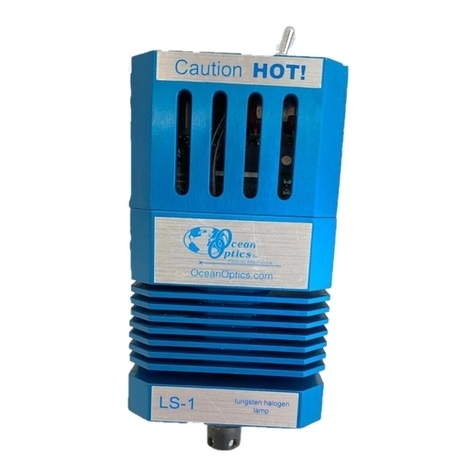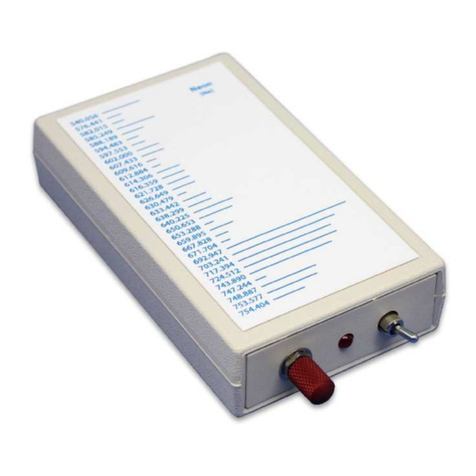6. Find the on/off switch on the back of the lamp and turn the lamp on.
7. Let the lamp warm up for at least 15 minutes before using.
8. Insert the disk that came with your lamp into your computer. The disk contains two ASCII files. These files have
the same information as the Lamp Calibration Reports that came with your LS-1-CAL. One file has the
calibration numbers for calibrating the spectral response of your system with the lamp and a bare fiber; its name
contains the lamp’s serial number, followed by FIB.LMP. The second file has the calibration numbers when
calibrating the spectral response of your system with the lamp and a CC-3 cosine-corrector and fiber; its name
contains the lamp’s serial number, followed by CC3.LMP.
9. Copy these two files into your OOIIrrad Irradiance Software directory.
10. Start OOIIrrad Irradiance Software. Make sure you are in Scope Mode.
11. Under the Lamp menu options, choose Select Lamp. A window opens in which you must choose the Lamp
Calibration Report file that reflects your optical setup.
12. Under the Spectrometer menu options, choose Configure Fibers. Enter the fiber diameter values for each
channel in your setup. If using a bare fiber, enter the fiber’s diameter here. If using a fiber with a CC-3 cosine
corrector, enter 3,900. Whatever optical setup you wish to use for your application, you must also use for
calibrating the spectral response of your system. For example, if you are going to use a 200-µm fiber with a CC-3
cosine corrector for your application, you must use the same 200-µm fiber and CC-3 for calibrating the spectral
response of your system.
13. To the right of the displayed spectrum, enter the data acquisition parameters for your setup. The values for Scans
to Average and Smoothing Size must be the same for your reference, dark and irradiance scans. You may use a
different integration period for your reference scan, but you must use the same integration period for your dark
and irradiance scans.
14. Under Spectrometer menu options, choose Calibrate and then select the channel you are calibrating.
15. A dialog box opens with the message Verify lamp was ON for at least 15 minutes for a REFERENCE scan.
Make sure nothing is blocking the light path going to your spectrometer. Your setup (spectrometer, fiber, and
sampling optics) for taking a reference should be identical to your setup for measuring your sample. Taking a
reference spectrum is requisite before the software can calculate absolute irradiance measurements. Click OK.
16. Another dialog box opens with the message Block light path to spectrometer for a DARK scan. If possible, do
not turn off the light source. Instead, completely block the light path going to your spectrometer by inserting an
opaque object into the lamp’s filter slot. Taking a dark spectrum is requisite before the software can calculate
absolute irradiance measurements. Click OK. The spectral response of your system is calibrated.
17. If you selected Display calibration info when calculating in the Configure Spectrometer dialog box, you will
now see the results of the calibration procedure. The top left graph represents the linear 15th order polynomial
regression. The top right graph represents the dark scan. The bottom graph is the calibration curve representing
the spectral response of the process.
18. The calibration procedure is saved in a file named CH0.CAL for calibrating the master spectrometer channel,
CH1.CAL for calibrating the first slave spectrometer channel, and so on.
Specifications
Operating Instructions: LS-1-CAL
-2-





















